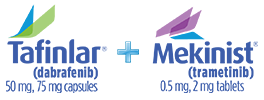
What is melanoma?
Melanoma is a type of skin cancer that begins in the cells that give the skin its color, known as melanocytes. Initial signs of a possible case of melanoma are unusual moles, sores, blemishes, lumps, or changes in the look or feel of an area of skin.
To help identify melanoma, you can follow the ABCDE system of characteristics.
Asymmetry
One half of the mole is unlike the other.
Border
The border of the mole is irregular, scalloped, or poorly defined.
Color
The color of the mole varies from one area to the next and can exhibit shades of tan, brown or black, white, red, or blue.
Diameter
Melanomas are usually larger than 6 millimeters (about the size of a pencil eraser) when diagnosed, but they can be smaller.
Evolving
The mole looks different than others on your body or is changing in size, shape, or color.
If you have melanoma, you’re not alone
More than 100,000 people are diagnosed with melanoma annually in the United States.
Advanced melanoma: stages III and IV
When melanoma cells spread beyond the initial tumor, the melanoma is considered advanced. Metastatic melanoma is considered advanced melanoma. Advanced melanoma can be classified as either stage III or stage IV.
When tumor(s) can’t be completely removed by surgery, either because they’ve spread to too many places or their location makes surgery very challenging, the melanoma is considered unresectable.
Understanding your diagnosis
Why it’s important to test for mutations
Once you are diagnosed with advanced melanoma, you and your health care provider can learn if your melanoma is BRAF+ (also written as BRAF-positive). Knowing your BRAF status can help make sure you get a treatment specifically made for BRAF cancers, like TAFINLAR + MEKINIST.
BRAF mutations
If your melanoma is BRAF+, you have a change in your BRAF gene, known as a mutation. This means that damage to the BRAF gene is causing cells to grow uncontrollably, leading to cancers such as melanoma.
People with BRAF+ melanoma are more likely to have their cancer return after surgery and may face more serious risks compared with those who are not BRAF+.
About 50% of people with advanced melanoma have one of these mutations. The most common types of BRAF mutations are called BRAF V600E and BRAF V600K.
BRAF testing
To test for BRAF, your health care provider takes a sample of your melanoma to check its DNA. The sample can be taken from a biopsy (tissue sample taken for testing) or a surgical sample if your melanoma was surgically removed. The sample is sent to a genetic laboratory that will analyze its DNA to see if it contains a BRAF mutation. If your test comes back positive, it means your melanoma is BRAF+.
The next-generation sequencing (NGS) modality is one example of these tests. This test is able to analyze multiple genes at the same time. Other tests include mutation-specific polymerase chain reaction (PCR), mutation-specific real-time PCR (rtPCR), and immunohistochemistry (IHC).
Treating BRAF+ melanoma
BRAF+ melanoma can be treated by a targeted therapy—a treatment that finds and targets certain cancer cells with this specific BRAF mutation. It’s important to ask your health care provider to get tested and confirm if you are BRAF+ before mapping out your treatment path.
Download the brochure for more information
About TAFINLAR + MEKINIST
A treatment designed for BRAF+ melanoma


